
Guide to Students in printing — 33
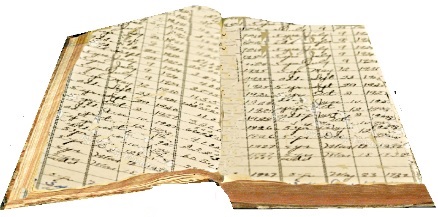
-Few objective Questions and answers-
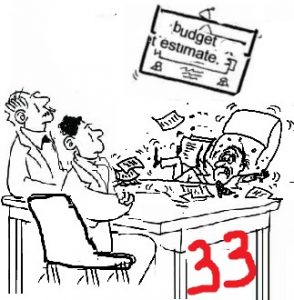
Written by : N.R. Jayaraman
136) What aspects are considered while estimating for printing a book?
- Size of the book
- Area of printing per page
- Font size and style of type face for the text, extracts, footnote etc
- If hand or machine composed, whether leading between each line is necessary
- No of pages likely to accommodate the contents in the typed manuscript
- No of pages likely for title, half title, preliminary matter, contents, appendices, index etc
- No of illustrations, their size and space likely to be occupied by them to work out the estimated pages.
- Operational times for various stages till finishing the book and
- No of hours needed for the following activities to estimate the cost:-
(i) Pre-press printing activities such as composing, proof reading and imposing besides processing of films and plates. Make ready time, printing time, finishing activities time for guillotining, lamination if any, collating and gathering, bindery, and packaging wherever necessary and whichever are involved in the production.
(ii) Direct material needed such as Films and Plates, paper, ink and indirect materials needed.
137) What is casting-off and how is it useful?
Casting off is the process of estimating in advance the number of words, spaces, symbols and illustrations which will occupy per page of the document under print with reference to the manuscript received from the customers. In short the casting off process contributes to the book production process because it predicts the number of pages required to print the book in reference to the manuscript.
138) What is the common method adapted for Casting-Off process?
Casting-Off process generally begins by counting the words or characters in the manuscript to calibrate the likely no of pages it will occupy in the book. This is called approximation or word count method.
To help casting off, the layout of the book will be decided* first including the size of type face to be used, margins for headings, white spaces called margin around the text etc. There are probably some pages that may not have been included in the manuscript such as front and back cover matter, half title, title page, copyright page, dedication, quote or epigraph, contents, list of illustrations, foreword, preface, acknowledgements, introduction, appendix(es), end notes, glossary, bibliography, references, index(es) etc. Wherever they are necessary, based on the contents of the manuscript, the estimated pages can be worked out. Those not necessary can be eliminated in the final cost of the book negotiated.
*Three important elements called ‘depth’ is taken into the account for the Casting-Off process. They are known as ‘depth for text matter’, ‘appearing depth’ for the text plus headings if any, and finally the ‘overall depth’ which includes the white space needed for better appearance, signatures and page no etc. The element called ‘depth’ is illustrated below.
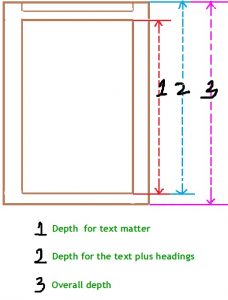
Once format and layout aspects are considered, then no of words per page in the manuscript will be counted on sampling basis picking at random few pages from the manuscript, say two to three pages. Based on the word count in those 2 to three pages the average words per page in the manuscript will be determined. The average words determined will be multiplied by no of pages in the manuscript to arrive at the total no of words the manuscript contain with an error margin of plus /minus 2 %.
It is generally accepted that the normal English word contains five letters on an average plus one letter space is added to give space between two words.
Supposing on two sample pages the total no of words works out to say 850 words, then in the 150 pages of manuscript received, the total no of words would be:
- 850 ÷ 2 = 425 words per page × 150 pages = 63750 words in the manuscript
The estimator takes into account from the reference book in hand, no of words that occupy per page based on the specific type face, style, size, no of lines and standard space given between the lines. The presses normally keep few specimen printed pages with different size fonts and style for reference purposes. The specimen pages are from the earlier printed books. Therefore estimating the no of pages the words in the manuscript will occupy remains easier. See calculation below:
Supposing the reference book, of the same size of book under print contains say 230 words per page, then 63750 words in the above said manuscript would form:-
- 63750 words ÷ 450 words per page in sample page = roughly 142 printed pages
Therefore the 63750 worded manuscript will be estimated to need 142 pages with an error margin of plus/minus 2 % since some of the words may be longer, containing more letters in them.
139) When the customer insist on reducing no of pages by retain the same book size, same text contents in the manuscript, how will the revised estimate be done?
There are only two options left before the estimator to work out the job. He can reduce the font size or alter the font style with legibly readable one and reduce the white margins proposed on the four sides of the book to the extent that the readability is not affected.
For example, let us presume that based on 63750 words manuscript, the estimator has worked out 142 pages for a given size of book set in 12 pt type font with 1½ lead margin between lines. The white margins on sides of the book has been worked out as say ½ inches and top and bottom as ¾ inches. The estimated book has 11 words per line and 40 lines per page which comes to 440 words per page. The customer insist on printing the book in less than 100 pages, then what could be done?
(i) In first action the estimator can quickly increase one word space by reducing the side margins and add two more lines in top and bottom by reducing the white spaces on top and bottom thus increasing the no of words which works out as below:-
- 11 words per line plus one more word = 12 words per line
- 40 lines per page plus 2 more lines = 42 lines per page
Therefore 12 words per line x 42 lines per page becomes = 504 rounded to 500 words per page instead of 440 words
(ii) Thus 63750 words manuscript is estimated to be printed in 127 pages in 12 points in first revision. In order to further reduce 27 more pages, in next stage he decreases the point size in the following manner as shown below:-
If 63750 words have to be accommodated in 100 pages, per page has to accommodate 637 to 638 words instead of 500 words possible in first revised estimate. Therefore to accommodate 63750 words in 100 pages, he further suggest printing the book in 9 points font so that the book can be printed in 103 pages instead of 142 pages as per the work out shown below.
- Revised 12 pts size font x 500 words occupy @ 6000 sq pts per page which is the maximum available space for each of the 127 revised pages
If per page requirement is 637 words to be accommodated it will have to be reduced to as below:
- 637 words x 12 points = 7644 sq points
- Available space = 6000 sq points
- Therefore the point size has to be reduced to :
- (i) 6000 sq points available ÷ 7644 sq points needed x 12 points = 9.41 appr rounded to 9 to 10 points font
Therefore to accommodate 63750 words of the manuscript, the book is estimated to have max 10 point to be set in 637 words per page document. Each line will have 15 to 16 words in each of the 42 lines per page document. Thus the 63750 worded manuscript can be accommodated in 100 plus/minus 2% pages if set in 10 point size font instead of 12 point font.
One has to be cautious in this estimating process. An average English word consists of five characters or letters per word and the space between each word equals to one additional letter. Some of the words may also be longer carrying up to 8 letters while some words may have only two letters per word. Therefore an average of 5 letters per word is arrived at as an average.
See the appearance of the document in comparison with the original when reduced size font is incorporated in revised estimate:
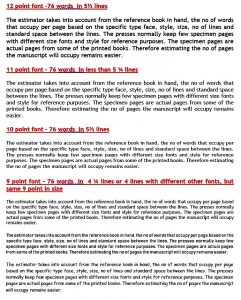
140) What is called ‘Good copy’ and ‘Bad copy’ in the manuscript?
The manuscripts received for printing consists of both hand written and typed or even printed matter.
The manuscript consisting of neatly typed material, legibly hand written, written approximately in same size and style, almost same no of lines per page, each line in same width, printed matter neatly pasted and in order etc is called ‘Good Copy’ as counting the words for estimating remains easier.
The manuscript consisting of badly hand written in haste, written words in the text illegible and difficult to read, cuttings from other notes pasted in between the text material as additions or continuations, hand written additions and deletions in between lines or paras etc is called ‘Bad Copy’. The estimator will find it difficult to work out the word count.
141) What is Typography?
Typography is the art and technique of selecting suitable typefaces for the print which has to be legible, readable, and appealing to the eyes of one when displayed after production. In short the printed material should be aesthetically pleasant.
142) How important is Typography?
The ultimate appearance of the book and its readability depends on the Typography. The pleasing or eye catching appearance of the letters, numbers, and symbols on the print depends on the style of letters, size, choice of colour selected or created for this process. Since typography can alter the entire appearance of the presentation, the thoughtful and deliberate selection of typefaces, point size, line length, colour and many such elements are carefully chosen by the Typographer to attract the attention of the viewers. The typographer should be careful in designing the aspects of book printing as readability remains the primary concern of the readers.
If the typographic process is not done properly it will affect the decisions on the font type, font size, presentation style of the book and the amount of white space required (called free margins) per page which in turn mar the overall appearance of the book.
If the book contain lesser no of pages, then bigger size font or ornamental fonts may be used in order to give the book more shelf presence in a bookstore for mass appeal and similarly for a book that has a more number of pages, use of smaller font in order to reduce the number of pages can also be thought of. In order to take these preliminary decisions the typographic process comes handy.








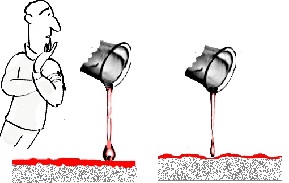
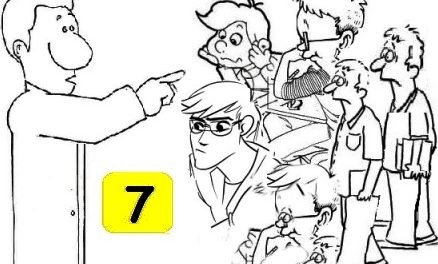






Recent Comments